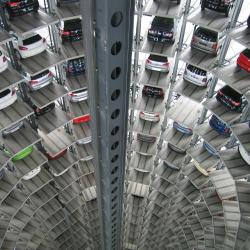Understanding Car Depreciation: How to Choose a Car That Holds Its Value
When purchasing a car, many buyers are primarily focused on the initial cost, monthly payments, and maintenance expenses. However, there's another crucial financial aspect to consider: depreciation. Understanding car depreciation is pivotal in making an informed decision and securing a vehicle that can hold its value over time.
What is Car Depreciation?
Car depreciation is the reduction in a vehicle's value over time. From the moment a new car is driven off the lot, it begins to lose its value. On average, a new car may lose 20% of its value in the first year, and up to 60% over the first five years. This decline varies based on several factors, including the make and model of the vehicle, its condition, mileage, and market demand.
Factors Influencing Car Depreciation
-
Brand Reputation and Reliability: Cars from manufacturers known for reliability tend to depreciate more slowly. Brands like Toyota and Honda have a reputation for producing durable vehicles, which retain their value better than others.
-
Market Demand: Some cars are more popular than others, influencing their resale value. For instance, SUVs and trucks are currently in high demand, which helps them hold value better than some sedans.
-
Mileage: The more miles a car has, the less it is worth. Keeping mileage low can help maintain a car’s value.
-
Condition: A car maintained in excellent condition will depreciate slower. Regular maintenance and avoiding accidents can prevent a rapid decline in value.
-
Fuel Efficiency: As fuel prices fluctuate, vehicles known for good gas mileage can maintain or even increase their desirability, affecting their depreciation favorably.
-
Model Year and Updates: Newer models or those with significant updates and features can depreciate differently. A major redesign can make previous model years less desirable.
Choosing a Car That Holds Its Value
-
Research Depreciation Rates: Before purchasing, research the depreciation rates of different makes and models. Resources like Kelley Blue Book or Edmunds can provide valuable insights into which cars retain their value best.
-
Consider Resale Value History: Look for vehicles with a history of high resale values. Brands known for longevity and low depreciation are often a safer choice.
-
Opt for Popular Models: Popularity often equates to demand, which influences depreciation. Vehicles that have strong sales numbers typically hold their value better.
-
Evaluate the Features: Cars with modern technology, safety features, and fuel efficiency tend to appeal more in the secondary market, helping them maintain value.
-
Choose the Right Trim Level: While top-of-the-line models depreciate faster due to their higher initial price, basic models might lack some appealing features. Finding a balance in the mid-range trims often offers the best value retention.
-
Purchase at the Right Time: Buying a car at the end of the model year or when dealers need to clear inventory can offer savings that counteract depreciation.
-
Consider Certified Pre-Owned Options: These vehicles are usually well-maintained and have experienced the steepest phase of depreciation, offering better value retention.
Conclusion
Car depreciation is an inevitable part of vehicle ownership, but understanding this process and the factors that influence it can help buyers make smarter purchasing decisions. By focusing on reliability, popularity, condition, and demand, you can choose a car that holds its value, ultimately saving money in the long run. Making an informed choice starts with comprehensive research and understanding the key attributes that make a vehicle a valuable asset rather than a rapidly depreciating one.






















